The Yorkshire Dales |
|
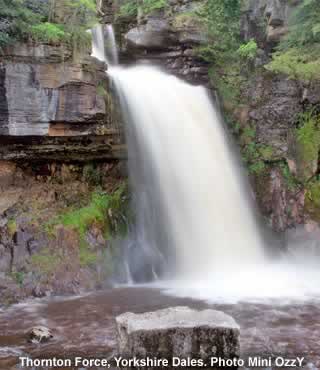 |
|||
A beautiful landscape of open valleys, surrounded by hills or mountains |
Listen to this article |
The word "dale" describes an open valley, usually surrounded by hills or mountains. The best-known examples in the country are in the North, across both Yorkshire and Cumbria. This area is recognised for its fantastic culture, wildlife, and natural beauty, and so in 1954, it was awarded protected status, becoming Yorkshire Dales National Park. |
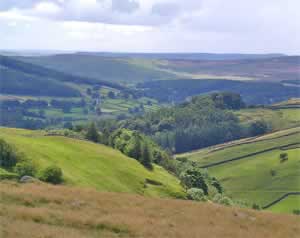 The view over Wharfedale Photo Robbo-Man |
The valleys were created by glaciers in the last ice age, over 100,000 years ago. They were formed into elegant U or V shapes, making for spectacular views from almost anywhere. |
The ground within the park contains a lot of limestone, which has given rise to many of the area's notable features. The most noticeable of these are the large, imposing cliffs, which are locally known as "scars" - but there are also dozens of waterfalls, as well as countless caves and caverns. |
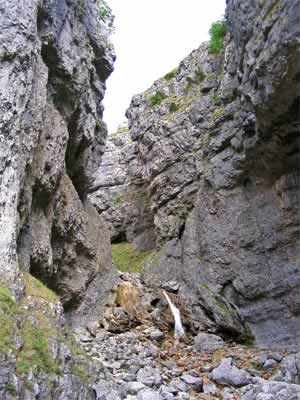 Gordale Scar, near Malham Photo Lupin |
The caves were created because limestone tends to erode easily in the rain. The resulting network of underground chambers and potholes is one of the biggest and most complex in Britain, offering fascinating views and experiences. Tiny corridors give way to huge chambers, covered in stalagtites and stalagmites. It is the foremost destination for the country's caving enthusiasts - but if you decide to take a look, try and be careful! The passages cover more than 70 kilometres, so you don't want to get lost! The largest cavern of all is Gaping Gill - big enough to hold St Pauls Cathedral and contains Britain's tallest continuous waterfall, all underground. Public access to Gaping Gill is possible but only on certain open days and with specialist potholing club assistance. |
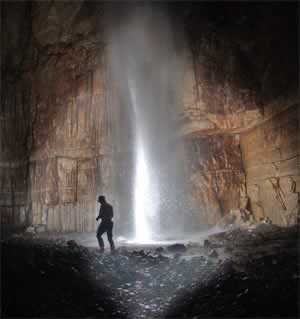 Inside the main chamber at Gaping Gill. Cave Photo Jarvist Frost |
Viewing the park's waterfalls is perhaps a safer option. These were also created via the easily-erodable limestone, which means there are lots to see! Perhaps the best way is to travel the Waterfalls Walk, from Ingleton village - a popular route which leads you past many of the park's best water features, including its most famous waterfall - Thornton Force. |
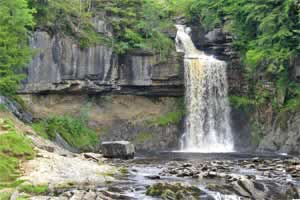 Thornton Force Photo alx_chief |
Another big part of the scenery within the park is actually man-made. In order to set borders on their fields, and to control cattle, the local farmers constructed walls from dry stone. These boundaries were made using no mortar whatsoever, and are held together simply via the interlocking shapes of the stones. The drystone walls can be seen everywhere in the park. They've been there so long that they've acquired an ancient, weathered look and are now an integral part of the iconic Yorkshire Dales landscape. |
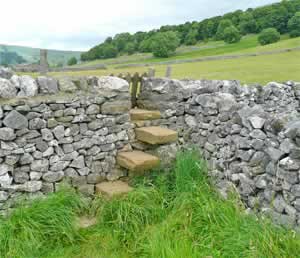 Dry Stone Walls Photo Paul Stephenson |
Scattered throughout the dales are several quaint little towns and villages, which often feature pleasant buildings, and local markets. There are lots of small lodgings and guesthouses, making them a good base for exploring the area. The area's towns also have many traditional pubs, which are the best places to try out the local cuisine - hearty roast beef, with generous servings of Yorkshire Puddings. |
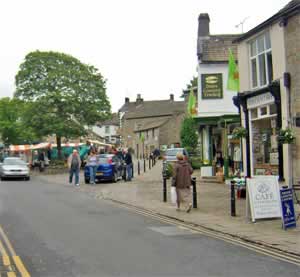 The centre of Grassington Photo Neil T |
The beauty of the dales has tempted several film crews to the area. Over the years, the park has provided the set for Emmerdale, the long-running British Television soap, as well as big-budget films like Robin Hood: Prince of Thieves. But even if you're not filming the next Hollywood hit, when you come to the Yorkshire Dales, remember to bring your camera - because you're going to see things you won't want to forget. |
|
Pocket Britain is optimised for use on a smartphone or tablet with internet access. All content is subject to copyright. All reasonable methods have been used to ensure information supplied is accurate at the time of publication. However, it is advisable to check information before relying on it. Privacy Policy |